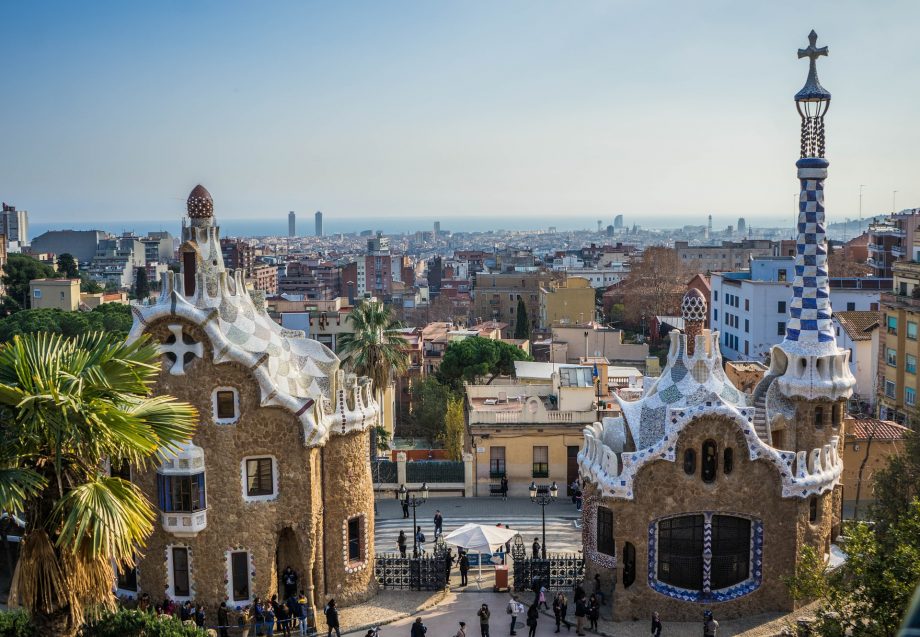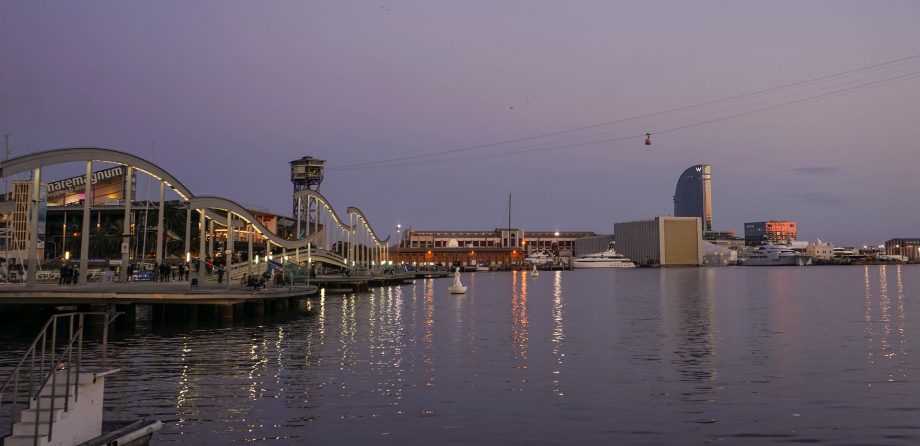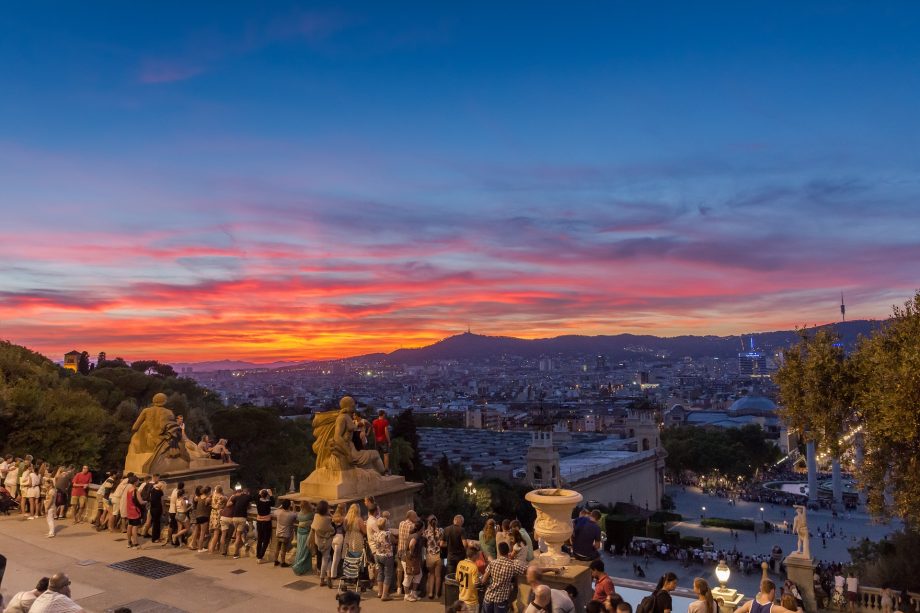Visit Barcelona

Barcelona is a Gothic and Modernist wonder on the Mediterranean Sea. It is quirky, cosmopolitan and effortlessly chic.
Barcelona breathes life: from chefs foraging for fresh produce in La Boqueria Market at the crack of dawn to partygoers leaving El Born’s pulsing clubs around the same time.
If you pause for a brief moment you will discover Barcelona’s real charm is to be found in its small details: from the hidden courtyards of Barri Gòtic, the light catching Sagrada Família’s wax-like turrets, all come together to make the Catalan capital one of Spain’s most liveable and loveable cities. But how did all of this come into being?
Barcelona has a rich history
Barcelona was founded by Phoenicians and Carthaginians.
The original name of the city was Barcino, probably named after the Carthaginian ruler Hamilcar Barca. The Romans arrived in the 1st century B.C. choosing as capital of the region, first Tarraco (current Tarragona) and subsequently in the 3rd century A.D. Barcino (Barcelona).
Archaeological artefacts from this period can still be found in Barcelona today, especially in the Plaza del Rei and in the Gothic quarter.
After the Romans, in the 5th century, the Visigoths occupied the city and changed its name to Barcinona.
During the 8th century Barcinona was occupied by the Moors and remained under their control for another 100 years until the Franks conquered the city again.
The Spanish Reconquest began in this zone, which became known as the Spanish Marches (La Marca Hispánica).
During this period, the region was divided into Counties, the most important of which was the County of Barcelona.
In the year 988 Count Borrell II achieved independence from the Carolingian empire for the County of Barcelona, the territory of the County expanded forming the region which would be later known as Catalonia.
Catalonia became a part of the Crown of Aragon, but with the union of the kingdoms of Aragon and Castile, Barcelona began to loose its importance and power.
During the following years, conflicts raised between Barcelona and Madrid. Barcelona was banned from trading with the American colonies and in the 17th century, Catalonia went to war with Spain, declaring its independence with the support of France.
Barcelona is a true city of culture
Barcelona is dynamic, restlessly creative, constantly changing, always looking beyond Spain, into Europe or even across the Atlantic, for inspiration, yet for centuries it was scantly regarded.
Then came two unconnected events that together reversed the outside world’s perception of the city.
The first occurred in 1975 when General Francisco Franco, who had systematically and often brutally tried to eradicate the treasured Catalan language and culture for 4 long decades, died, and the city and province started to live and breathe independently again.
The second came with the 1992 Summer Olympics, which brought a fever of renovation work that drastically transformed Barcelona from a drab, grey industrial city to a gleaming new metropolis.
The medieval facades of the Barri Gòtic, which for centuries had been coated in a thick layer of grime, were sandblasted, cleaned, and restored to their pristine glory.
Barcelona swung with intoxicating speed from being ignored to being awesomely revered.
Word had spread and suddenly Barcelona was “in.” The media furore surrounding Barcelona saw it reborn as the coolest rendezvous in Europe, saying that the city boasted some of the most inventive restaurants, bars, shops, and hotels on the continent.
Such is Barcelona’s fame that today, no fewer than nearly 13 million visitors arrive annually to explore its delights.
And such is the Catalans’ pride and ambition that they are preparing it for an even greater role: as capital of a separate nation, independent of Spain.
For many visitors, Barcelona’s most captivating sights are in the Ciutat Vella (Old City).
Above this medieval world, in a sweeping arc that stretches up to the encroaching hills, is L’Eixample (Catalan for “extension”), which grew when the city was forced to expand beyond its confining city walls.
It is, in contrast with the ultra-narrow lanes of the Ciutat Vella, a wide-open area of wondrous avenues and extraordinary 19th-century modern edifices.
But there’s more to Barcelona than just an endless proliferation of buildings old and new.
A refreshing number of green belts soften the cityscape from Montjuïc and Tibidabo’s high parklands to intimate hideaways like Ciutadella near the waterfront, which is in turn now a revitalised area of walkways, marinas, beaches, and top seafood eating spots.
If sports are what you’re after, golf, horse riding, tennis, and swimming are within easy reach.
How to Get around Barcelona
Given the complexity of Barcelona, getting around is surprisingly easy.
An efficient system of subway and suburban trains and surface trams and buses will take you from one end of the city to the other for less than the price of a coffee, and bikes are increasingly used as a free means of transport.
You can walk to most places in Barcelona’s old city, or through the main districts of interest in L’Eixample.
Barcelona’s public transit system includes extensive and interlinked networks of buses, subway trains, trams, and “rodalies” (local commuter rail).
Individual tickets on subway and buses within the central city cost 2.55€.
The major station for all subway lines is Plaça de Catalunya.
If you want to see Barcelona by hop on-hop off buses, the most established of the sightseeing buses, the double-decker Barcelona Bus Turistic, makes a circuit on three routes that can deliver you to almost every major tourist attraction in the city.
The circuits on the red route (old city, Montjuïc, and the waterfront) and the blue route (L’Eixample and Gràcia) each take about 2 hours.
The green route, which shuttles along the neighbourhoods and beaches east of Port Olimpic, takes 40 minutes. It’s useful if you don’t want to use regular public transportation, but it’s quite a bit less efficient.
Driving and trying to park in congested Barcelona is not worth the hassle.
Use public transportation and save car rentals for excursions and moving on.
Barcelona has a fantastic food and drink culture
People in Barcelona take their food very seriously.
They plan supper whilst eating lunch.
When planning an excursion, their most important concern is where they are going to eat. In Barcelona eating comes first, and when you taste the food you will understand why. Spanish food is exceptionally good and one of the healthiest diets in the world.
Catalan cuisine is an ancient Mediterranean style of cooking, characterised by the aromas of the herbs that can be found on the mountains, the animals that are bred locally and the seafood harvested from the Mediterranean.
Post pandemic the digital nomad movement along with the boom in remote work has put Barcelona centre stage and a regular stop for most digital nomads.
Along with this has come a laptop friendly cafe culture in Barcelona where digital nomads are busy tapping away on their laptops while sipping their lattes!
Wine
Wine is present in almost all meals and there are so many great Spanish wines to choose from.
One of the closest wine producing regions to Barcelona is just to the South, called Penedés, especially well known for its Cava, a sparkling wine that is very similar, if not better, than champagne.
Cava goes down really well with seafood and most tapas. There are also excellent red and white wines produced in the Penedes and if you travel a little further south you will find the Priorat region which also produces some of the best wines in the country.
Beers
In Barcelona, the standard beer is “Estrella” made by Damm, a company that was established by Alsatian immigrants in the 19th century and now produces 15% of all Spain’s beer.
Damm also produce “Voll Damm”, a flavoursome malt beer which is a little stronger, so take it easy. It is considered locally to be one of the finest beers ever made.
Other Damm beers are the dark Bock Damm, the smooth AK Damm, the strong Keler and the shandy called Damm Lemon.
Damm also produce an alcohol free beer called Free Damm which is surprisingly good.
The second most popular is “San Miguel” from Lleida, owned by Mahou.
You can also find many smaller local breweries in Barcelona. One of the most famous local breweries is Moritz, they make a lager that was once Barcelona’s most popular beer.
Since 2004 it has been making a strong comeback. The former subterranean Moritz Brewery, Ronda Sant Antoni, has been converted into a leisure and cultural centre where you can go and taste this crisp lager.
Meal Times
It shouldn’t matter what time you want to eat, but if you want to truly immerse yourself in Spanish culture, and eat when Barcelona does, you will want to know that for them lunch time in a typical Barcelona restaurant starts at around 2pm and supper time is anything after 9pm.
Many restaurants close on one day during the week and some are even closed in August.
You will find the majority of cafes and bars open from 7.30am and they close at around 2am.
When choosing what to eat, do as the locals do and order from the “menu del dia” when going for lunch. This is usually the best deal and for a fixed price you get three courses, wine and water.
Barcelona is a timeless city that goes from strength to strength and should be on everyone’s travel wish list.
Happy travels!


